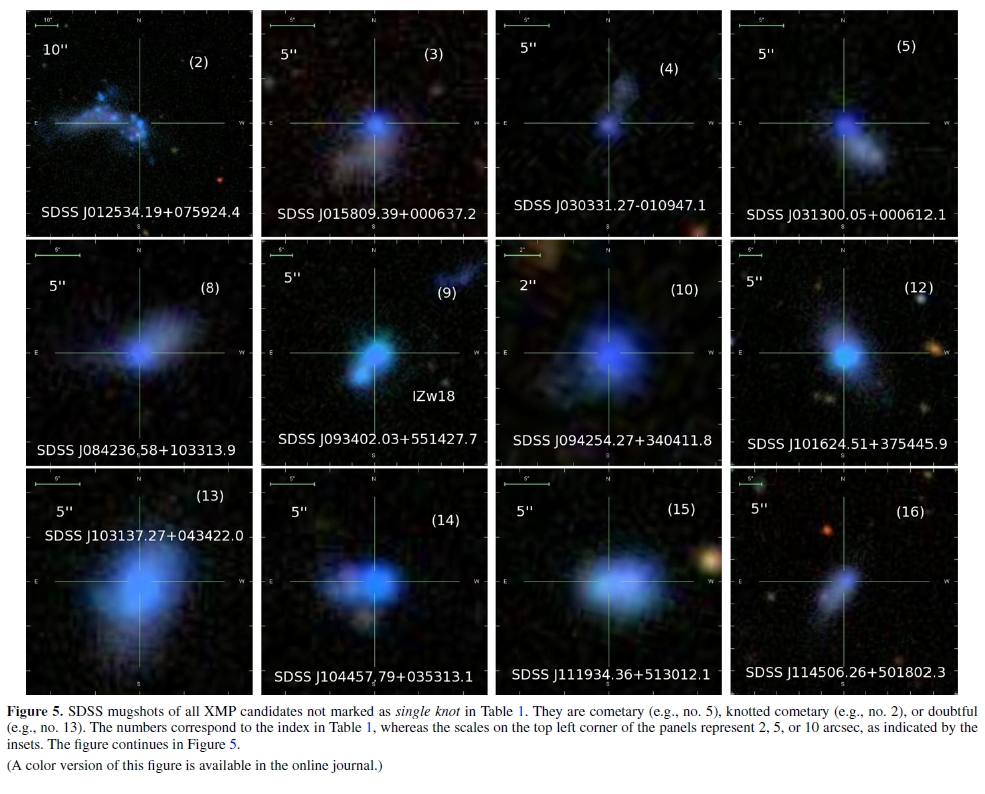The most metal poor galaxies
The nearby dwarf galaxies of lowest metallicity are probably unevolved fossils from the early universe and, consequently, they provide unique information relevent in a cosmological context. Studies of their nearly pristine interstellar medium (ISM) can shed light on the properties of the primordial ISM at the time of galaxy formation. Even the most metal-deficient galaxies in the local universe formed from matter that was already enriched by a previous star formation episode, and the determination of the minimum galactic metallicity seems to be the best constraint available on these first stars (e.g., Thuan and Izotov 2005). Because they have not undergone much chemical evolution, these galaxies are also the best objects for the determination of the primordial He abundance that constrains cosmological models (e.g., Izotov et al. 2007). In the hierarchical picture of galaxy formation, large galaxies arise through the assembly of small dwarf galaxies. Extremely metal-deficient dwarf galaxies are possibly the closest examples we can find of the elementary primordial units from which galaxies assembled.
BCD galaxies are the galaxies with the lowest known metallicity and, therefore, the most promising young-galaxy candidates in the local universe (e.g., Kunth and Oslin 2000). We aim at characterizing with unprecedented detail a statistical significant sample of these special objects. As we pointed out above, extremely metal-poor BCDs are rare. The smallness of the sample represents the bottleneck of the project. Fortunately, our group has available a number of new targets found as a by-product of a different study on BCD evolution. This list contains some ten extremely metal-poor BCD candidates. Moreover, we are in the way to complete it using k-means clustering analysis to identify extremely metal poor galaxies. (Same technique as in ASK Classificacion of SDSS/DR7.)
These studies are part of the thesis work of Ana Belen Morales Luis, an Astronomo Residente at the IAC.
.........
Ana Belen defended the thesis on Nov. 29, 2013
The thesis can be downloaded from here (20MB).
............
The first paper with the k-means search for XMP in SDSS/DR7 has been accepted, and you can get it here
 (This image contains some of the targets, that seem to have cometary shape.)
(This image contains some of the targets, that seem to have cometary shape.)